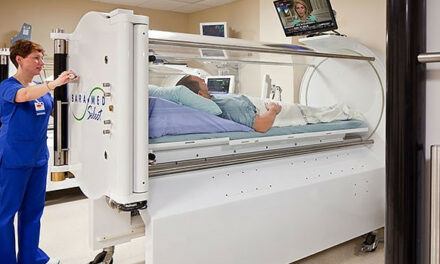Evening Primrose oil contains Gamma-Linoleic Acid and Linoleic Acid, both of which have been proven to be effective in treating skin conditions and health conditions. But more importantly, aids in the management of risk factors associated with diabetes and peripheral neuropathy, the evening primrose oil is a popular remedy among people with diabetes. However, possible side effects of evening primrose oil should not be ignored, so, in this article, I will be addressing ‘Is Evening Primrose Oil Safe for Diabetics?’, and if so when diabetics should and shouldn’t use evening Primrose oil.
What is Diabetes?
Diabetes is a health condition that affects and damages many organs in the body – the heart, liver nerves, kidneys, and eyes. Most of this damage is believed to be caused by the toxic effects of high blood sugar and other factors like high blood cholesterol and high blood pressure.
Evening Primrose oil has been proven that controlling the risk factors for diabetic individuals (blood sugar level, say), can, to a great extent, help to reduce several complications associated with diabetes. Evening Primrose oil contains Gamma-Linoleic Acid and linoleic acid, both of which have been proven to be effective in treating skin and other health conditions. But more importantly, aids in the management of risk factors associated with diabetes and peripheral neuropathy.
But what this evening Primrose oil really is?
What is Evening Primrose?
With the scientific name Oenothera biennis, evening primrose is also known as sun drop, evening star, weedy evening primrose, German rampion, fever-plant or hog-weed.
It is a type of herb native to Eastern, Central and North America. This King’s ‘cure-all herb’ is grown throughout Europe and some parts of Asia too.
Evening primrose is a biennial plant (completes its life cycle in 2 years) and grows to about 30–150 cm. It germinates within a period of one year to produce the lanceolate leaves which are 5-20 cm long and 1-2.5 cm broad. These leaves are arranged in a rosette form as they grow.
Its pale-yellow flower, blooms from late spring to late summer, opening every evening and closing at sunrise.
Evening primrose fruit is a legume which contains numerous seeds which are about 1-2 mm long. These seeds are released when the capsules are matured, and they split open.
What are the Uses of Evening Primrose?
For hundreds of years, evening primrose plants were used by the native tribes in North America as food and medicinal crop. All parts of this plant – leaves, blossoms, buds, roots and seeds are edible and can be applied topically.
1. Evening primrose as food
Generally, the taste of this plant is mild and often with, a bitter aftertaste.
The roots can either be cooked like potatoes or eaten raw, with a taste similar to the root of the black oyster plant when soaked in water before boiling.
Between the months of April to June when the plant is not flowering yet, its leaves can be used. They can be cooked in soup or eaten raw in salads. The leaves are also used for tea by Native Americans.
Evening primrose’s flowering stems are used preferably around the month of June when they are still young. They are peeled and either eaten raw or fried.
As for the flower buds, they are harvested from the months of June to September and used as a delicacy. Its mild taste and can be cooked in soup, fried, pickled in oil or eaten either raw. The flowers have a sweet taste and can be used in desserts or to garnish salads.
The whole seeds can be used like the sesame seed, roasted and in pastries. Evening primrose oil is also extracted from the seeds.
2. Medicinal use of evening primrose plants
What makes evening primrose a versatile and beneficial medicinal plant are its constituents which include – Omega 6 fatty acids, linoleic acid, fiber amino acids, potassium, iron, calcium, zinc, magnesium.
Traditionally, this plant is used to treat:
- hemorrhoids
- bruises
- sore throats
- digestive problems
- Stomach aches
- wounds
- skin inflammation
What is Evening Primrose Oil (EPO)?
Evening primrose seed contains 14% fixed oil which has about 7–10% gamma-linoleic acid (GLA), 65–75% linoleic acid, steroids, palmitic, oleic, and stearic.
The oil is extracted by cold-pressing the evening primrose seed. It is mostly used for medicinal purposes and believed to have healing properties as a result of its gamma-linoleic acid (GLA) content.
GLA is a type of omega-6 fatty acid believed to have therapeutic properties because of its anti-inflammatory and analgesic (pain-relieving) properties. When converted by the body into substances, it fights inflammation and cell damage.
GLA is very important to our health, sadly our bodies don’t produce it, but we can get it from our diet. Gamma-linoleic acid is readily available in some vegetable oils such as evening primrose oil, borage seed oil, Hemp seed oil and blackcurrant oil. Our bodies can also get it by converting linoleic acid (LA) to GLA.
Tip: CBD oil can help you remove warts.
In alternative medicine, Evening primrose oil is used and believed to be effective for treating or relieving various health conditions such as –
- eczema
- acne
- psoriasis
- rheumatoid arthritis
- symptoms of menopause and premenstrual syndrome (PMS)
- diabetic neuropathy and osteoporosis
Evening primrose oil can either be applied topically or consumed orally as a supplement, rest assured it is not an essential oil.
It has been found to interact with some medications such as blood thinners and nonsteroidal pain relievers and may cause mild side effects if overused.
What are the Benefits of Evening Primrose Oil?
Evening primrose oil is believed to be an effective treatment for numerous health and skin conditions in complementary medicine. While there are some research available to support these claims, there are others who refute its effectiveness for some health conditions. And for some, more research needs to be done to prove its general effectiveness, although many still believe its placebo effects.
Benefits of Evening Primrose Oil for the Skin
1. Acne
The Gamma-Linoleic acid present in evening primrose oil can help to clear acne by reducing skin inflammation and retaining skin retain moisture.
2. Eczema
Eczema is an inflammatory skin disease that causes itching, bumps, redness, and scaling. Although there are no much research to back up the claim that EPO can ease eczema, but according to a study carried out in 2014, it was observed that the severity and recurrence of atopic dermatitis (a type of eczema). That is based on 21 patients showed a positive result after 12 weeks of taking 4-gram to 6-gram of evening primrose oil daily.
3. Skin health
GLA is needed for the proper function of the skin and flawless skin. But the skin cannot produce GLA on its own and evening primrose oil can be one of the major sources.
According to a study, the topical application of evening primrose can help one to achieve a smooth and flawless skin by improving the skin elasticity, firmness, and moisture and fatigue resistance.
Health Benefits of Evening Primrose Oil
1. Rheumatoid Arthritis
Evening primrose oil may slow down progression or reduce the severity of rheumatoid arthritis. GLA found in evening primrose, borage seed, or blackcurrant seed oil according to the conclusion in a 2011 review of studies, can help to ease the pain of people with rheumatoid arthritis.
2. Menopause
Evening primrose oil has been used for centuries to treat symptoms of menopause. It is used to treat hot flashes caused by reduced levels of the hormone estradiol. This may be because GLA has an estrogen-like effect.
While the body of evidence to back up this claim remain mixed, a 2013 study found that evening primrose oil provided relieve the severity of hot flashes after 6 weeks of a 500-milligram daily dose. Although the duration and frequency of the episodes did not improve.
3. Premenstrual symptoms
Even though the evidence is inconclusive, women who have used evening primrose oil testify its effectiveness in easing menstrual cramps, treating and relieving PMS symptoms like bloating, depression and irritability.
4. Osteoporosis
Evening primrose oil is mostly made up of unsaturated fat. Increased intake of unsaturated fat has been proven to help reduce risks of osteoporosis in older women.
An 18-month study carried out in South Africa revealed that the combined use of evening primrose oil, calcium and fish oil supplements either reversed or slowed the progression of osteoporosis in older women compared to the control group that was given a placebo.
5. Reduces high blood pressure
According to a 2013 study using 9,732 subjects who had blood pressure with their age ranging from 18 to 98, it was observed that those taking evening primrose oil had a slightly lower systolic blood pressure.
6. Neuropathy
Evening primrose oil can help reduce symptoms of neuropathy such as – hot and cold sensitivity, numbness, tingling, and weakness.
7. Healthy Heart
It helps to reduce blood cholesterol, thereby promoting a healthy heart.
8. Hair loss
Benefits of Evening Primrose Oil for Diabetics
Diabetics can benefit from evening primrose oil’s ability to:
- Reduce total cholesterol and blood fat while increasing good cholesterol.
- It can help manage blood sugar levels which also helps to reduce the risk of diabetic neuropathy.
- Evening primrose oil can help to reduce and high blood pressure, and consequently improve diabetic complications which may help to enhance the quality of life for a diabetic patient.
- It helps to relieve neuropathic pain and other symptoms of neuropathy by increasing circulation to the affected nerve area.
- It helps to ease inflammation, prevent nerve damage and repair damaged nerves by maintaining myelin, a substance rich in lipid which insulates nerve cells.
Tip: Remember to avoid these essential oils if you have diabetes.
Evening Primrose Oil for Diabetics – What Research Says?
According to Journal of American Physical Therapy Association, regulated high blood pressure can reduce diabetes-related deaths by 32% compared to those with poorly controlled blood pressure.
Several research studies have been carried out both on humans and animals in recent times on this topic. Some of which show that evening primrose oil can be used for managing the factors that increase the risk of diabetes such obesity, high blood pressure, bad cholesterol, blood fat levels and high blood sugar (which is the main cause of diabetes in the first place).
According to a study carried out on 80 patients suffering from severe diabetic neuropathy, it concluded that 88% of the patients were relieved of neuropathic pain after 12 months of 500 to 1,000 milligram daily dose of evening primrose oil combined with 400 milligrams of vitamin E.
In similar research using animals, a study demonstrated that EPO helps to restore the function of the peripheral nerve by improving the blood glucose control, antioxidant capacity and fat/lipid abnormalities.
Tip: Doterra essential oils can help you manage high blood pressure.
What are Possible Side Effects of Evening Primrose Oil?
Just like most herbal supplements, there is little research to conclude how safe the evening primrose oil is for long-term use.
Some of the notable side effects of evening primrose oil are headache, stomach upset, nausea, and diarrhea which mostly occur if you are taking or using it for the first time or when you take an overdose.
Most of the side effects are mild and resolve gradually on their own once the body gets used to the treatment, or the dosage is reduced, or the treatment is stopped. But when the symptoms persist or worsen, you should see a doctor.
Who Should Not Use Evening Primrose Oil?
- Because there is barely any research to ascertain how safe it is for children, EPO should not be administered to children without first consulting a doctor.
- Pregnant women should stay away from this oil because GLA, which has an estrogen-like effect which may increase the risk of miscarriage.
- Do not take evening primrose oil if you are allergic to it.
- Avoid the use of EPO if you are using blood thinners and if you have clotting problems or bleeding disorder because it can interfere with the blood’s ability to clot.
- If you are on medication that controls blood pressure, do not take EPO because it lowers blood pressure and combining it with your medication may result in hypotension.
- Do not use EPO if you are on medication for controlling blood sugar levels because it can also reduce blood sugar level and combining it with your medication may result in hypoglycemia.
- You need to stop taking EPO at least 2 weeks ahead, if you are about to undergo a surgery that requires general anesthesia because EPO may react with the drugs for anesthesia resulting in seizures.
- Do not use EPO with other non-steroid pain-relieving drugs or drugs for depression.
Dosage For EPO
There is no enough information scientifically to determine the right dosage of EPO to be taken. So, if you are considering the use of this supplement, do not use more than the dosage recommended on the package or label. You can also consult your doctor, a pharmacist or herbal medicine practitioner.
Call your doctor if there is no improvement in the condition you are treating with evening primrose oil or if the condition worsens as you are using this product.
Conclusion
Evening primrose oil is one of those supplements that have been found to be effective in managing many health conditions like reducing the risk of diabetes complications. If you’re looking for an alternative herbal supplement to help stabilize your blood sugar levels, lower your blood pressure or reduce bad cholesterol, you can consider the use of evening primrose oil.
Also, note that evening primrose oil is a complementary medicine, and its use should not stop or replace medication prescribed by your doctor.
Always consult your doctor before using any alternative medicine or herbal supplements.









